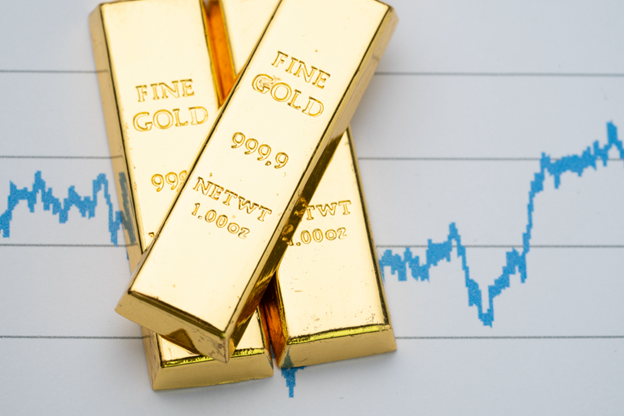-- A newly released publication from Lear Capital, the precious metals firm founded by investment professional Kevin DeMeritt in 1997, suggests that several factors — ranging from technological trends to government spending — could pose a threat to the U.S. economy.

The “Digital Dollars, De-Dollarization and Debt: The Case for Gold as Your Best Defense” report identifies the following three elements as potential concerns.
De-Dollarization
The U.S. dollar’s status as the world’s reserve currency may be at risk for a few reasons, according to Lear Capital’s report.
Following Russia’s invasion of Ukraine in 2022, the U.S. placed a number of economic sanctions on Russia and its allies. Half of Russia’s foreign currency reserves have been frozen, for instance, along with 70% of assets in Russian banks, and imports of gold and diamonds into the country have been blocked.
That type of weaponization of the dollar, the report says, has led a number of countries to look for other options they can use in international transactions.
China, Russia, and Iran are pursuing bilateral trade agreements that involve their currencies, instead of the dollar. After sanctions limited Russian banks’ access to the SWIFT messaging system used in global financial transactions, Russia created an alternative system. In April, Russia announced that nearly all domestic financial transactions in the country will be conducted with the new system, according to global research provider The Jamestown Foundation.
In addition to the cost involved in the U.S. providing funding to entities such as Ukraine during global conflicts, if the U.S. government’s approach to foreign policy prompts countries to decide to move away from using the dollar, it could cause problems for the U.S. economy, according to Lear’s report, by reducing the dollar’s purchasing power.
“People have to be aware that countries are trying to get away from the U.S. dollar and giving themselves more flexibility to be able to transact deals for oil with OPEC and so on without having to use the dollar,” Kevin DeMeritt says. “They can use some other form of an asset, like gold or crypto.”
Digital Currencies
The “Digital Dollars, De-Dollarization and Debt: The Case for Gold as Your Best Defense” report mentions that monetary policy and financial privacy concerns could arise from the potential adoption of central bank digital currencies — virtual money that’s issued by a central bank, which is sometimes referred to as digital dollars.
To date, 36 digital currencies are in the pilot phase, 30 are in development, and three have been launched — in the Bahamas, Jamaica and Nigeria, according to the Atlantic Council’s Central Bank Digital Currency Tracker.
A system involving digitized U.S. government-backed dollars could possibly provide benefits such as increased accessibility to currency and reduced costs relating to paper money production. Yet the shift to that type of approach, Lear Capital’s report says, could pose privacy concerns because the government might be able to monitor and scrutinize consumers’ transactions.
As the Bank Policy Institute points out, the shift to an anonymous blockchain-based system could also upset the traditional banking structure that allows consumers to securely store and immediately withdraw their money and obtain stable, low-cost, long-term funding — which could ultimately affect economic growth.
While the U.S. has not announced plans to implement government-supported digital currency, the White House issued an executive order in March 2022 that said the current administration “places the highest urgency on research and development efforts into the potential design and deployment options of a United States [central bank digital currency].”
Debt
Government spending in the U.S. certainly hasn’t declined in recent years; the national debt currently totals more than $34 trillion.
According to Lear Capital’s “Digital Dollars, De-Dollarization and Debt: The Case for Gold as Your Best Defense” report, the rising level of governmental debt and corresponding fiscal policies could threaten our economic stability.
The U.S. hasn’t backed its paper money with gold for decades; today, the Federal Reserve determines how much currency is created each year. During the COVID-19 pandemic, for example, trillions were printed and put into government securities to keep credit accessible and bolster the markets, according to USA Today.
The government’s ability to produce money at will affects the value of paper currency, Kevin DeMeritt says.
“Now that central banks print as much money as they want, [with] every dollar you print, the money that’s already out there becomes worth less and less,” he says.
Creating cash infusions for the economy can lead to issues, Kevin DeMeritt says, in areas such as the stock market.
“You have so much money that it’s going to go in different asset classes and create some sort of bubble somewhere,” the Lear Capital founder explains. “It happened in 2000 with internet stocks; it happened in 2008 with real estate. The bubbles happen, then the Fed raises interest rates, and you get a crash. The height of the cycle and the subsequent crash is going to be much bigger when you print up this much money.”
According to Lear Capital’s recent report, physical gold assets may be able to help consumers ward off some of the combined effects of government debt, de-dollarization and a possible central bank-based digitization of currency.
Even if the U.S. government’s currency production practices reduce the value of the dollar, for instance, gold should retain its value due to its limited availability as an asset.
“We can only mine so much gold per year,” Kevin DeMeritt says. “That controls the supply. It’s economics 101. Paper money is probably going to continue to fall, [as] it has for hundreds of years now, and the price of gold is probably going to continue to increase.”
Gold also offers you a way to privately conduct transactions without leaving a digital footprint, and it has historically served as a hedge against inflation. Between April 1973 and October 1982, for example, during the longest U.S. inflationary period on record, gold’s value rose.
The precious metal’s performance during economically challenging times is one of the major reasons central banks have been buying more of it in recent years, Kevin DeMeritt says.
In 2022 — the year when inflation reached the highest point since 1981 — the demand for gold among central banks hit its highest level in more than 70 years, according to the World Gold Council. In 2023, the organization said banks’ gold buying had “maintained a breakneck pace.”
“It makes sense,” Kevin DeMeritt says. “They want to hedge against inflation. They get to hold gold, and that’s going to offset some of the inflation pressure on paper debt they hold.”
Contact Info:
Name: John Ohanesian
Email: Send Email
Organization: Lear Capital
Address: 1990 S Bundy Dr Ste 650, Los Angeles, California, 90025, United States.
Phone: (800) 576-9355
Website: https://learcapital.com/
Release ID: 89130791




 Google
Google RSS
RSS